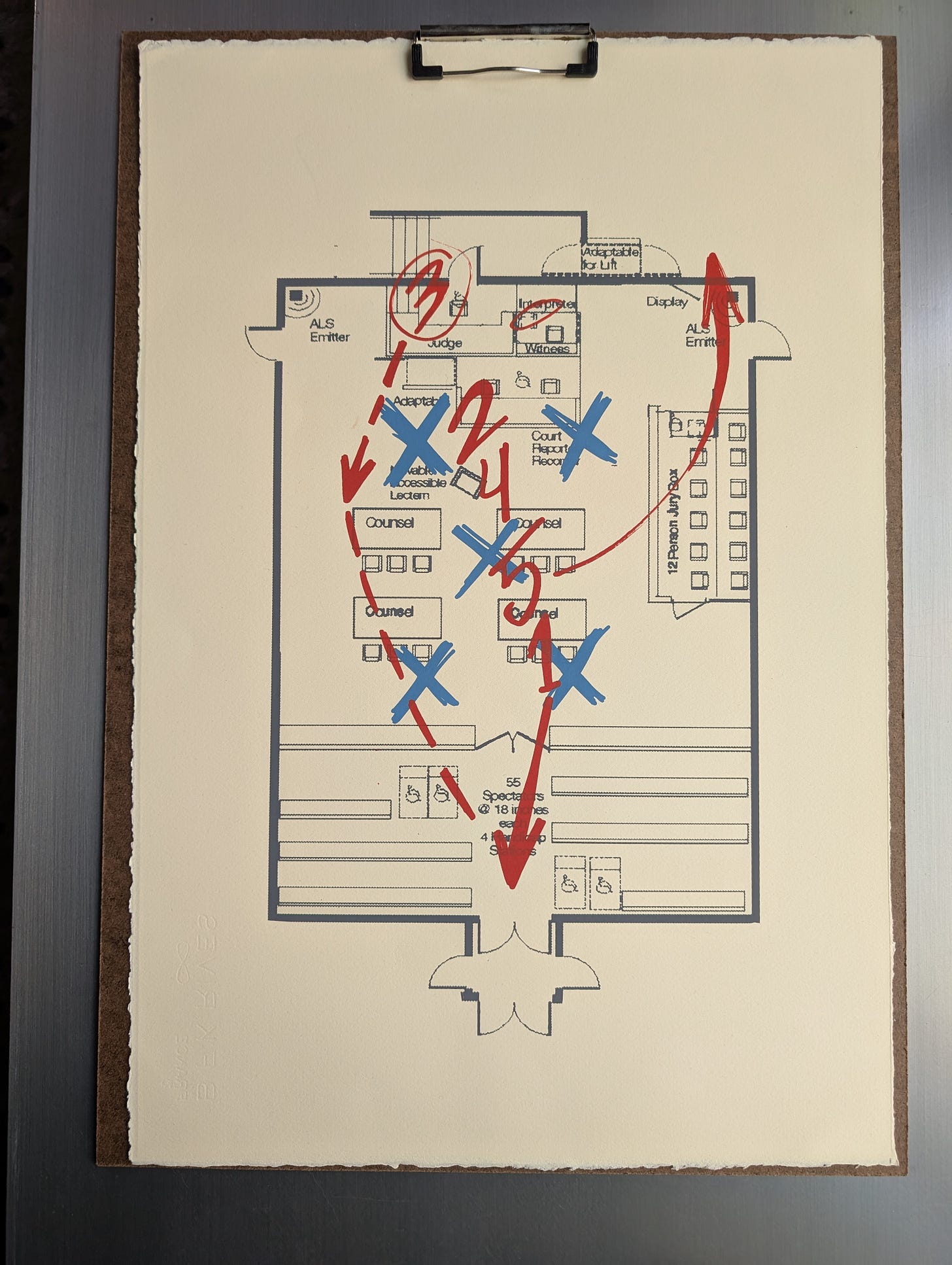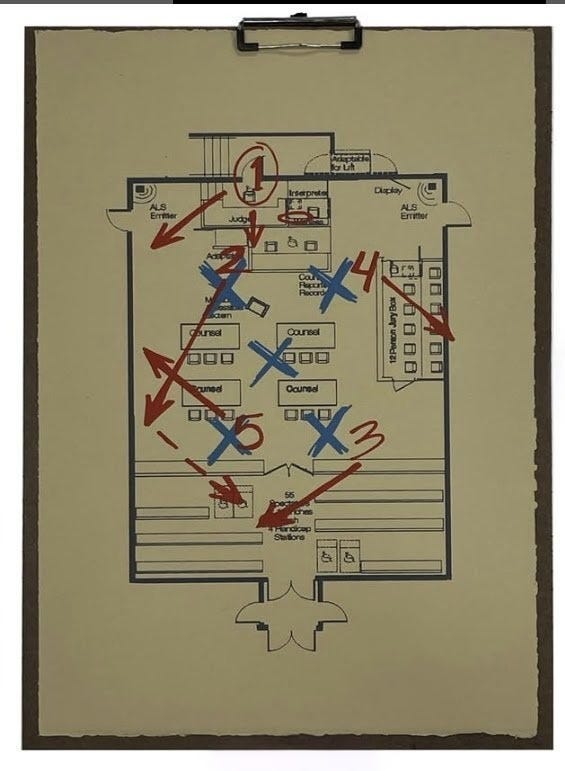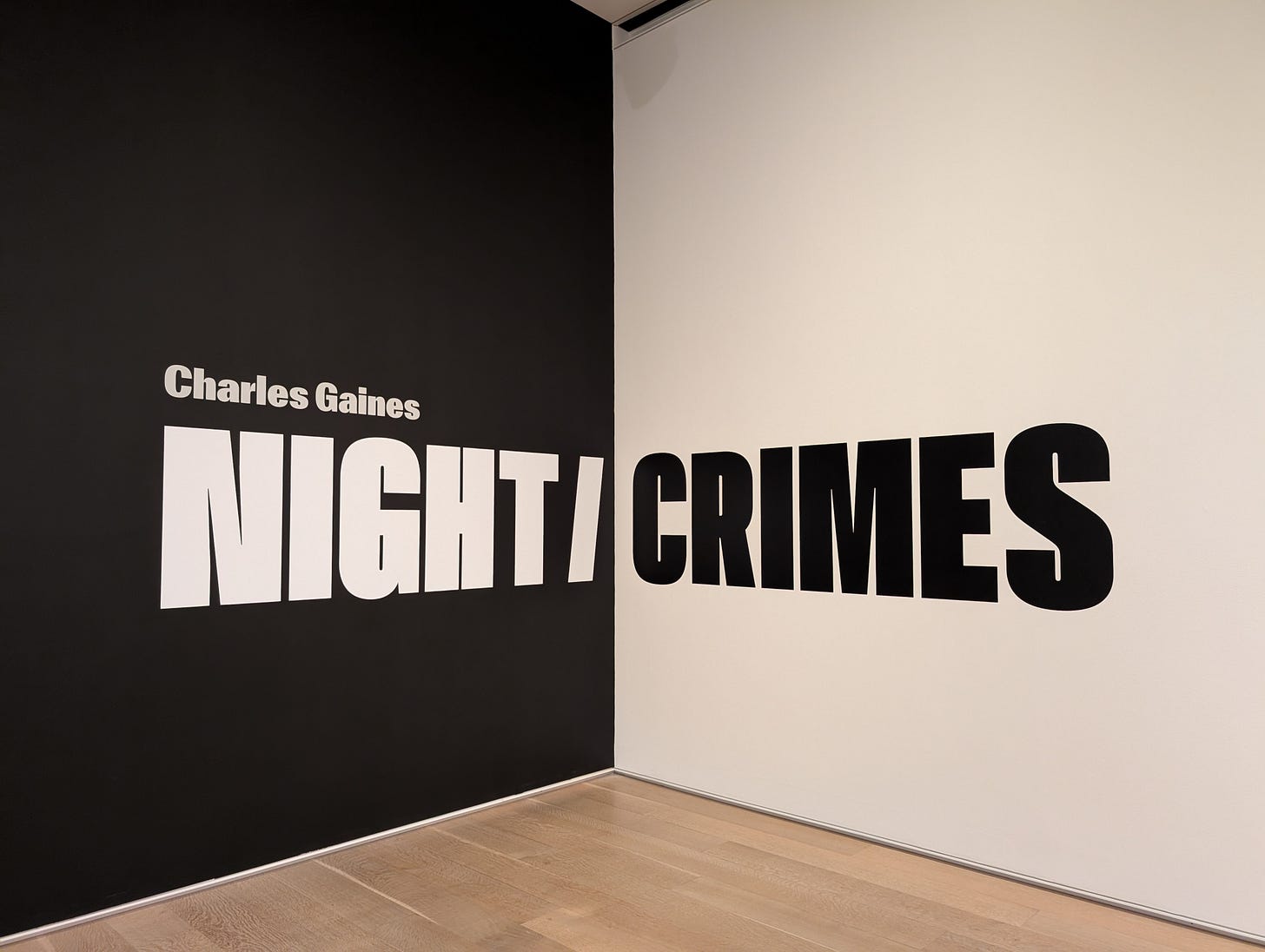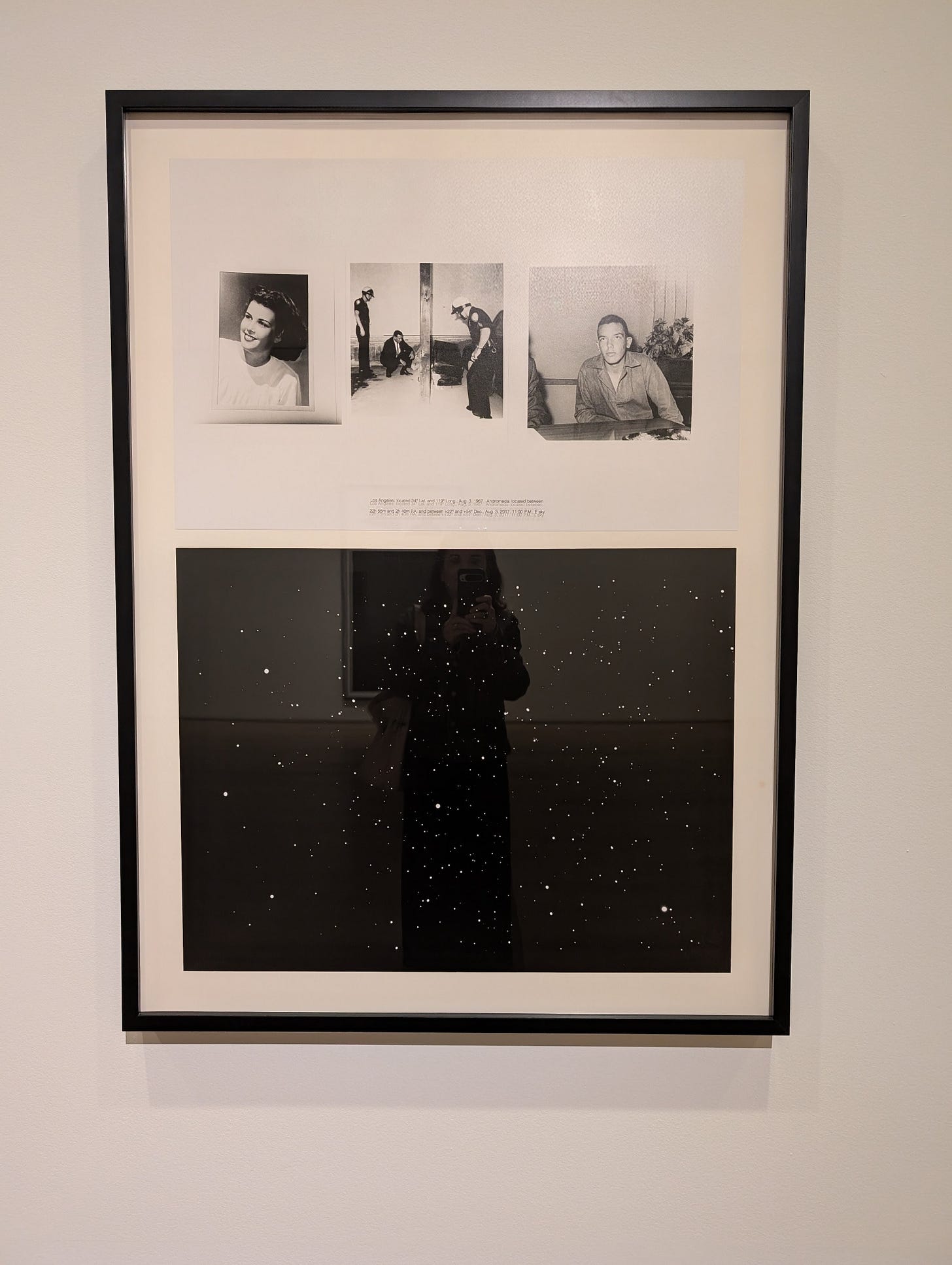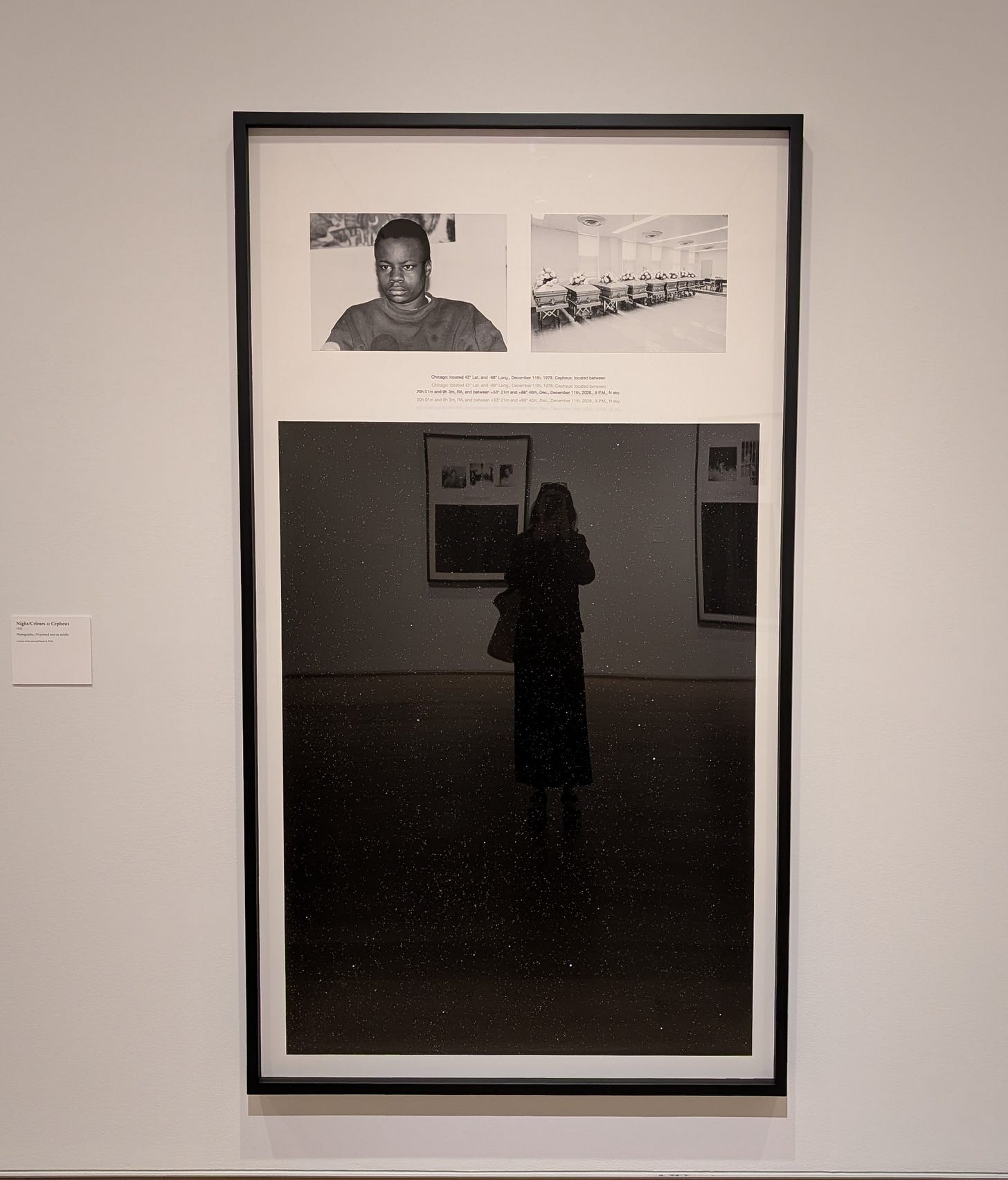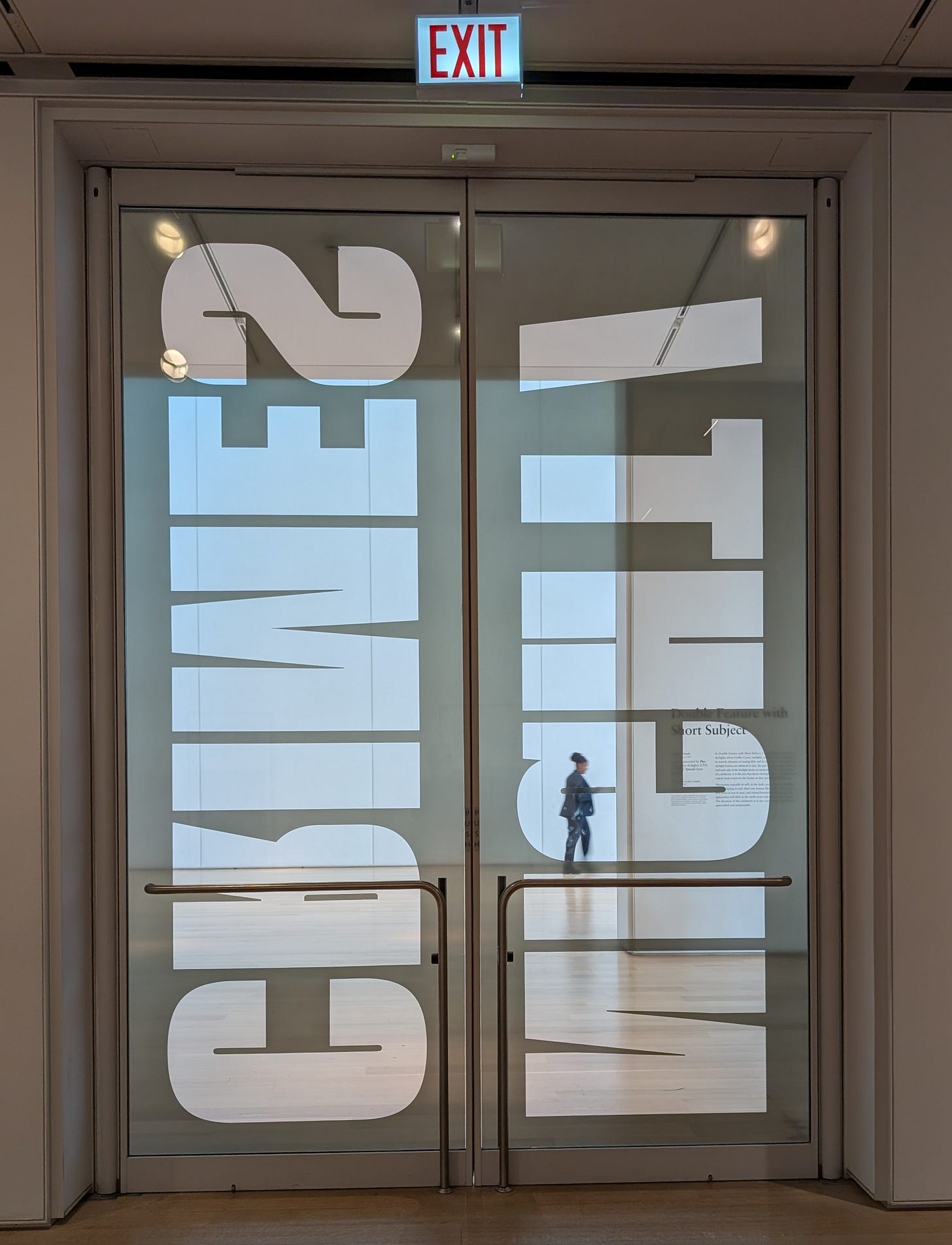Art that bends toward justice
Brandon J. Donahue-Shipp and Charles Gaines
For my birthday this year, Dan—who is an excellent gift-giver—got me a screen print by the artist Brandon J. Donahue-Shipp. It’s from his series called “Coach’s Playbook,” where he juxtaposes a diagram of a basketball play on top of a floorplan of a courtroom. The strategic plays, rendered in red and blue, are a comment on the relationship between Black and Brown communities and the American legal system. In other words, these works illustrate the maneuvers that Black and Brown people have to make within our legal system in order to ever “win.”
We first saw Donahue-Shipp’s work at the McNay Art Museum, in San Antonio, Texas, as part of an exhibit, titled “Sports Gear Becomes Art.” I was very taken by both the concept of “Coach’s Playbook,” as well as the artistic execution. Too often, great conceptual art gets derailed through poor execution, but not here.
Donahue-Shipp’s gallery, Pentimenti had this to say about the series:
“Through the layering of these two simple visuals, Donahue-Shipp reminds us of the complex histories played out in the American legal system. The prints come in various paper colors in reference to the 20th-century American Brown Paper Bag Test.”
Important art; important message.
The same can be said for a one-room exhibit at the Art Institute Chicago (AIC), “Night/Crimes” by Charles Gaines. Gaines originally created this series from 1994 to 1997, where he paired archival photographs of violent crime scenes, victims, and indicted murderers with images of constellations that could have been seen in the night sky when the crimes occurred.
Text printed onto the plexiglass of each artwork lists the location and date of the crime, the constellation’s astronomical position, and a date and time 50 years into the future, a reference to the fact that before computers, star charts were updated every 50 years to account for visible changes in the constellations’ position. Wall text in the exhibit noted that the “50-year span also evokes a human historical awareness: How, and for how long, does violence in the past influence present behavior? As things change, what remains the same?”
For the AIC exhibition, Gaines made two new works for the series which include photographs from the Chicago History Museum’s archives that portray Black men who were wrongfully convicted or acquitted in the city. As with all of the works in the Night/Crimes series, Gaines paired those men’s images with unrelated photographs that depict the aftermath of crimes. “By playing on the viewer’s impulse to assume a connection between the images, Gaines directly addresses how the American criminal justice system perpetuates racial injustice by relying on appearances and cultural biases to construct and confirm guilt.”
These racial biases have undermined justice for far too many people, for far too long.
In his sermon at Washington National Cathedral, just five days before he was murdered, the Reverend Dr. Martin Luther King said, “We shall overcome because the arc of the moral universe is long, but it bends toward justice.”
We all need to bend much further if real justice is to ever be served.


